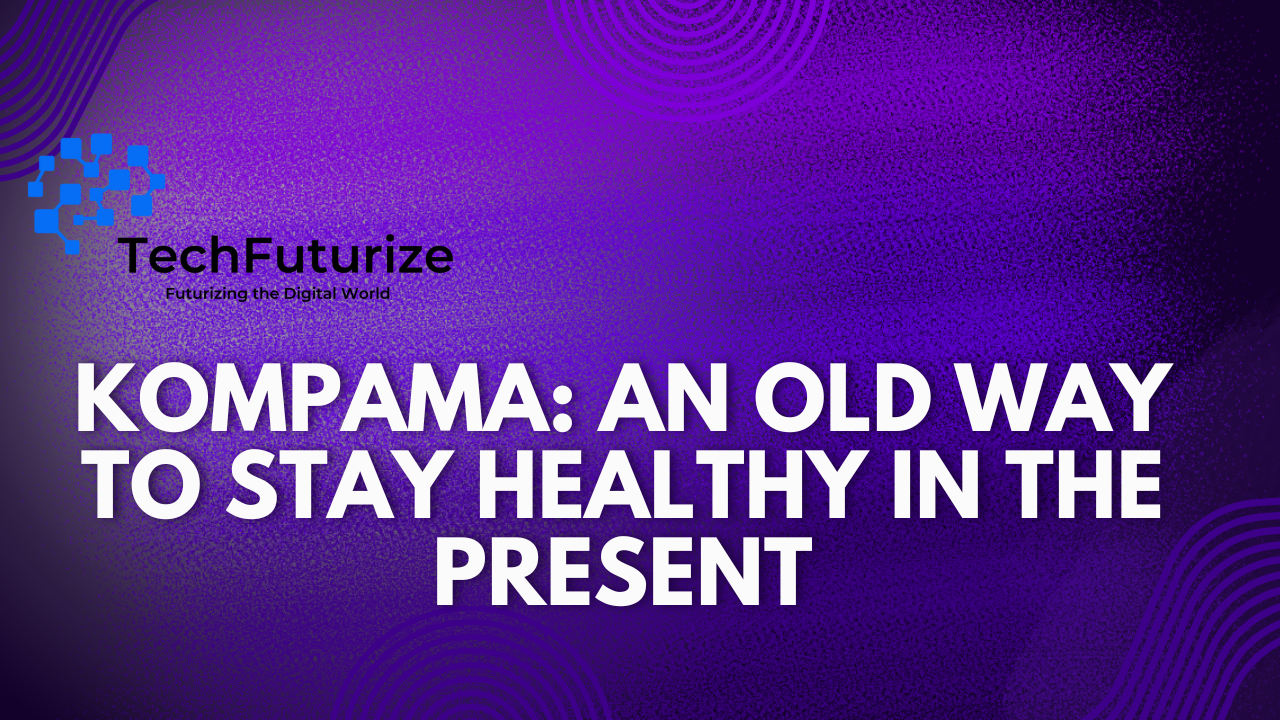Table of Contents
Start
In this fast-paced hyper-connected world a lot of us are looking for methods to reconnect with something deeper like ourselves other people and nature. In the midst of all the bustle of modern life an old practice is making a strong comeback giving a way to find balance and harmony that feels both timeless and important right now. Kompama is a comprehensive way of living that comes from indigenous societies and has a lot of wisdom for modern life. Kompama is different from many modern health trends that focus on short solutions or single approaches. It is a complete philosophy of interconnection that meets all of our physical mental emotional and spiritual needs at the same time. As more and more people deal with mental health issues and burnout rates rise Kompama offers not just another way to help yourself but a whole new way to live in the world. It honors our natural connection to all living things and helps us, find our place in the bigger picture of life.
What does Kompama mean?
Kompama is a native way of thinking and doing things that means “walking in balance” or “living in the right relationship.” Kompama is based on the idea that everything in the cosmos is related. This includes people animals plants elements and spirits. The practice includes keeping these relationships in balance through certain rituals mindfulness exercises and living in a way that is good for the community.
The practice includes numerous important parts, that work together to produce a complete system of health. The Earth Connection is about regularly grounding yourself and interacting with nature. It also, means knowing that human health and planetary health are linked. Community, Rituals stress the value of group ceremonies and shared experiences that strengthen social ties and encourage one another.Ancestral Wisdom means respecting and learning from the past while thinking about how our actions may affect the future.Daily Mindfulness brings mindfulness into everyday, tasks turning boring chores into chances to be present and thankful.Lastly Seasonal Alignment means living in harmony with the natural cycles and rhythms instead of trying to fight them.
Why Kompama is Becoming More Important Today
In a world that is becoming more and more divided and digital Kompama meets basic human needs that modern life often ignores. The technique provides remedies for significant difficulties in modern society such as the epidemic of loneliness environmental isolation and the pervasive sense of meaninglessness experienced by many notwithstanding material wealth.
The science backing Kompama’s advantages is steadily increasing. Studies have shown that activities that are important to Kompama such spending time in nature taking part in communal rituals and being thankful can greatly lower stress improve mental health and make life more enjoyable. Neuroscientific research indicates that communal singing and drumming prevalent in Kompama rites synchronize brain waves and produce oxytocin promoting feelings of connection and trust. At the same time ecological science is showing more and more that the health of the environment is closely linked to the health of people.
The timing of Kompama’s rebirth is particularly crucial as individuals seek alternatives to consumer-driven wellness culture. The wellness business frequently pushes solutions that are based on buying things and being independent. Kompama on the other hand focuses on developing relationships and making practices that everyone can do no matter how much money they have. This accessibility together with its all-encompassing approach makes it especially intriguing to people who haven’t had much success with piecemeal self-help methods.
How to Use Kompama in Your Daily Life
You don’t have to give up modern amenities or go to a remote wilderness to use Kompama in your daily life. Instead it means adding Kompama ideas to the routines and places you already use. Morning Grounding is the first step in the practice. Every day you should spend a few minutes barefoot on the ground whether it’s grass dirt or even a concrete balcony as you set your intentions for the day ahead.
One important part is making Nature Altars in living spaces. These are special places with natural things, like stones plants or water that remind us every, day of our connection to the land. These altars are places where people can stop and think about things and be thankful for a little time during the day.
Building community is another important thing to do. This can be done by organizing frequent potlucks with neighbors supporting local efforts, to clean up the environment or meditating with a group. The most important thing is to make places where people can connect and help each other without using devices.
Seasonal Awareness means modifying your habits, to acknowledge the natural cycles of the seasons. This could be eating foods that are in season changing your sleep patterns as the days get longer or making small rituals to recognize the changing of the seasons. We can still see which birds are around how the light changes and which plants are blooming even in cities.
Lastly Gratitude Practice goes beyond thanking people for their blessings to include thanking the natural systems that keep us alive such clean water healthy land and the complex web of life that makes our lives possible. This could mean saying thank you in silence before meals or keeping a thankfulness notebook that especially talks about how we depend on one other in nature.
The Good Things About Kompama Practice
Regular Kompama practice has benefits for many areas of health and well-being. Practitioners usually say that their anxiety and stress levels have gone down a lot and they, feel more emotionally powerful and have a deeper sense of purpose and meaning in life. The practice’s focus on acceptance and connection helps people deal with life’s problems with more calmness.
Physically Kompama fosters healthier lifestyle choices naturally without rigid control. Focusing on natural movement spending time outside and eating nutritious foods often leads to better physical health better sleep and more energy. These improvements come from a new way of thinking, about one’s body and environment not from rigorous workout programs.
Kompama encourages deeper more genuine relationships and a natural desire to care for the environment. The idea of connectivity makes living sustainably an obvious choice instead of a sacrifice. People who practice typically find themselves spontaneously cutting back on what they use making less waste and speaking out for protecting the environment.
Kompama may be most essential because it gives people a clear way to understand their role in the world and gives them spiritual fulfillment without forcing them to follow certain religious rules. This makes it easy for people from many religions and cultural backgrounds to use and useful.
The Problems and Downsides
Even though it has merits bringing Kompama into modern life might be hard. The amount of time it takes especially for people with busy careers or family obligations can seem like too much. The practices need to be done on a regular basis which is hard to do in a culture that values production and always being active.
Another big worry is cultural appropriation which happens when people from dominant cultures use indigenous customs without knowing enough about them putting them in the right context or showing respect. There is a significant risk of undermining or misrepresenting sacred traditions or of commodifying practices, that ought to remain community and non-commercial.
It might be hard for Kompama to fit in with mainstream social and professional norms when their ideals clash with those of others. The practice’s focus on slowness community and caring for the environment may not fit in with workplaces that value speed competition and consumption. Some practitioners say they, don’t feel in sync with friends and coworkers who don’t share their ideals.
People who live in cities may not have access to natural areas or live in places where concrete and artificial light are the main sources of light. In civilizations that value individualism it can be hard to build community. It takes a lot of investigation and thought to locate teachers who can pass on traditions in a real and moral way.
Important Things to Do to Practice Well
Finding, real sources and teachers is the first step to successful Kompama practice. This means finding indigenous elders and practitioners who are ready, to share their wisdom in a respectful way while also being aware of cultural rules and giving them something in return for their help.
In Kompama practice consistency is more important than intensity. Regular small amounts of practice built into your daily life are preferable than doing a lot of practice all at once. Even five minutes of daily grounding or thankfulness can make substantial effects over time.
Community support greatly improves and keeps up practice. Finding or making a group of practitioners that think like you can help you be accountable learn from each other and feel connected which is what Kompama is all about. Online forums can help people connect at first but in-person meetings are better for putting the idea into practice.
Adapting to one’s own situation makes sure that the practice stays sustainable. Instead than strictly following certain conventions the core of Kompama is discovering methods to acknowledge connections in one’s real life. A person who lives in an apartment in the city might practice differently than someone who lives in the country yet both might still live by the ideals of Kompama.
Finally being patient with the process shows that Kompama is a big change in how people see the world not a quick cure. The most profound advantages emerge progressively when the philosophy becomes assimilated into one’s existence rather than staying an isolated practice.
Final Thoughts
Kompama provides a significant remedy for the isolation stress and environmental estrangement prevalent in contemporary existence. It addresses the main causes of suffering instead than just managing the symptoms by reminding us of how connected we are to all living things and showing us how to acknowledge these connections in practical ways. The practice gives people instant benefits for their health and a long-term way to make the world a better place.
As we deal with more and more environmental problems and mental health issues the timing of Kompama seems almost prophetic. The practice doesn’t require us to give up modern life; instead it asks us to employ ancient wisdom in new ways such using technology wisely building community in new ways and making decisions that respect both human dignity and the limits of nature. Kompama helps us reconnect with the land each other and ourselves. This helps us go back to the balance that many of us feel is missing in our fast-paced broken world.
The voyage inside Kompama is really a homecoming a return to realizing that we are never really alone or isolated but part of a beautiful interconnected whole. By taking this road we not only cure ourselves but we also help heal our communities and the earth leaving a legacy of balance for future generations.

